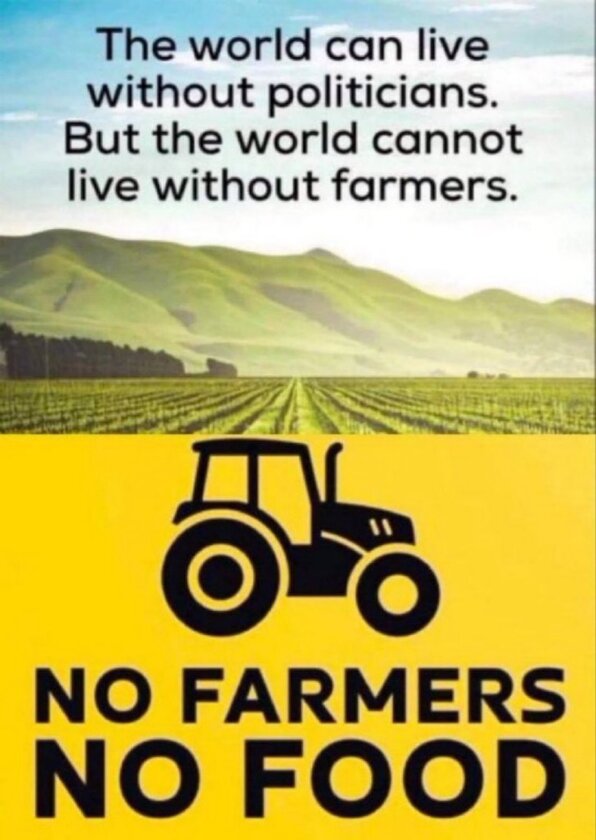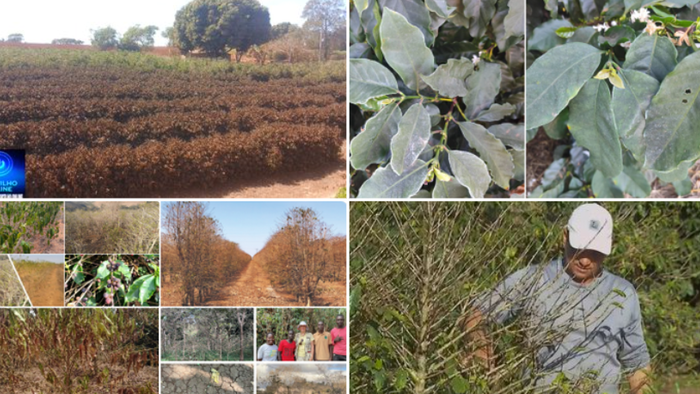Email today to buy or store your DASEIN System 6 can carton today.
[email protected]
Will The European Union Ban Or Tax Meat Production?
BY TYLER DURDEN
WEDNESDAY, JAN 11, 2023 - 09:30 AM
Authored by Chadwick Hagan via The Epoch Times,
Will the European Union or certain countries in the EU ban meat production in order to meet emission regulations? In short, the answer is yes. There is a very real possibility in the near future that a member country (probably Sweden, Denmark, or the Netherlands) will impose a tax or an outright ban on meat production.
Why Sweden, Denmark, or the Netherlands? While this sounds absolutely crazy, part of the rationale is to avoid legal issues with the EU. A handful of European countries have legally binding net-zero plans for emissions and climate metrics, and the Netherlands, Sweden, and Denmark are small countries with large agricultural footprints. Small landmass with heavy agriculture industry makes for an easy target.
I wrote about such conflicting issues last month with the Netherlands closing down farms. The Dutch, like the Swedes and the Danes, are very serious about reducing emissions, as well as limiting meat consumption. The problem is they consume and produce lots of meat.
In Haarlem, a city west of Amsterdam, they have banned meat advertisements starting in 2024. Treating meat like cigarettes or alcohol to impose meat alternatives on consumers so consumers can eat highly processed fake meat products, or rely on imported meat, is a major turning point in reason and rationale.
Saxo Bank market strategist Charu Chanana stated in Saxo’s end of the year predictions that Sweden or Denmark “may decide to heavily tax meat from 2025 and could ban all domestically produced live animal-sourced meat entirely by 2030.” Charu added: “I wouldn’t be surprised to see schools in Denmark and Sweden banning meat altogether. It’s definitely going that way.”
In Sweden, statements purporting that Swedish meat consumption is declining and vegetarianism is on the rise contradict official statistics. According to recent EuroMeatNews and data from the Swedish Board of Agriculture, “Demand for Swedish meat and poultry increased significantly.”
Beef, pork, and poultry aside, the Swedes like their seafood. Most of their seafood is imported. According to a 2019 report from the University of Gothenburg: “72 percent of Swedish seafood comes from imports and 28 percent from domestic producers.” It is worth noting that 90 percent of the 72 percent of seafood imports come from China.
As for Denmark, Denmark has a sizable meat industry. Danish meat revenue amounted to $4.40 billion in 2022 and is expected to grow annually by 5 percent-plus. The Danes produce a huge amount of pork for markets—around 32 million piglets a year—and millions of those pigs are sold to the European Union (predominantly Germany and Poland). For comparison, 32 million piglets is almost twice the number of piglets that Canada sells to the United States each year.
Furthermore, while Denmark’s government and their EU representatives have meat production in the crosshairs for additional regulation and tax, they are certainly not against harvesting animals for fur. In Denmark, mink farming is very lucrative, and Denmark is one of the world’s largest producers of mink furs; there are thousands of mink farming operations, and tens of millions of mink. Latest figures show upwards of 98 percent of mink fur harvested in Denmark is exported to foreign markets. It’s a huge money maker.
In fact, Denmark’s mink are so plentiful, they’ve become an invasive species in Denmark, destroying local ecosystems. How is this not an issue?
I am not against lower emissions, or animal welfare, or even the growing popularity of vegetarianism, but I am against irrational thought processes from totalitarian technocrats.
Shuttering farms and banning meat production is not a rational strategy. According to the UN Food and Agriculture Organization, 14.5 percent of all human-caused greenhouse gas emissions are attributed to livestock. However, according to the science journal Nature Food, South Asia, Southeast Asia, and South America are the world’s largest emitters of greenhouse gasses.
Is it not a better idea to place limits and regulations on those who emit the most pollution and greenhouse gasses (in this case, Asia and South America)?
I find it highly irritating that Asia and South America continue on with endless pollution, while leaders in the Western world plot to destroy industry in the name of emissions controls. Westerners should not sit back and allow Asian and South American countries to catch up to our standards by using growth methods that pollute while Western markets are punished for economic success.
Let the socialists experiment with Asia and South America and allow the economic engines of the Western world to flourish, without interference from Marxist totalitarians.
What is the difference between Italian and Russian bees?
Italian and Russian bees are both excellent breeds for beekeeping, although they have a tendency to swarm. Each race of bee is hard-working and can produce large amounts of honey in the right conditions. Italian bees are less aggressive and easier to requeen but are more likely to rob. The Russian breed overwinters well and has good resistance to varroa mites and other pests.
1. Appearance
The Italian bee has yellowish-brown bands on a brown abdomen. The queen is often a darker shade of orange or leathery brown, making it easier for beekeepers to spot her in the hive.
Pure Russian honey bees are typically a black or dark brown shade with pale yellow stripes. But if the hive requeens, she could mate with other drone breeds, which will alter the appearance of the colony.
2. Origin
Researchers believe Italian bees originated from the southern region of Italy. In 1859, Italian honey bees were introduced to America, where they soon replaced German bees. Italian bees are now on every ...
“Whoever controls the food supply controls the people.”
Society can only survive and fully function with a robust and ample food supply & security. All roads lead from that. That’s why supporting farmers and farming is probably the most important campaign in this era. Without food (ideally fresh & local) societies crumble and public health diminishes.
Over the past 40 years, many of our public and essential assets have been sold off or plundered for corporate greed. Land is one of the last remaining asset grab battles. Support our farmers. Our food supply depends on them.
#NoFarmersNoFood















